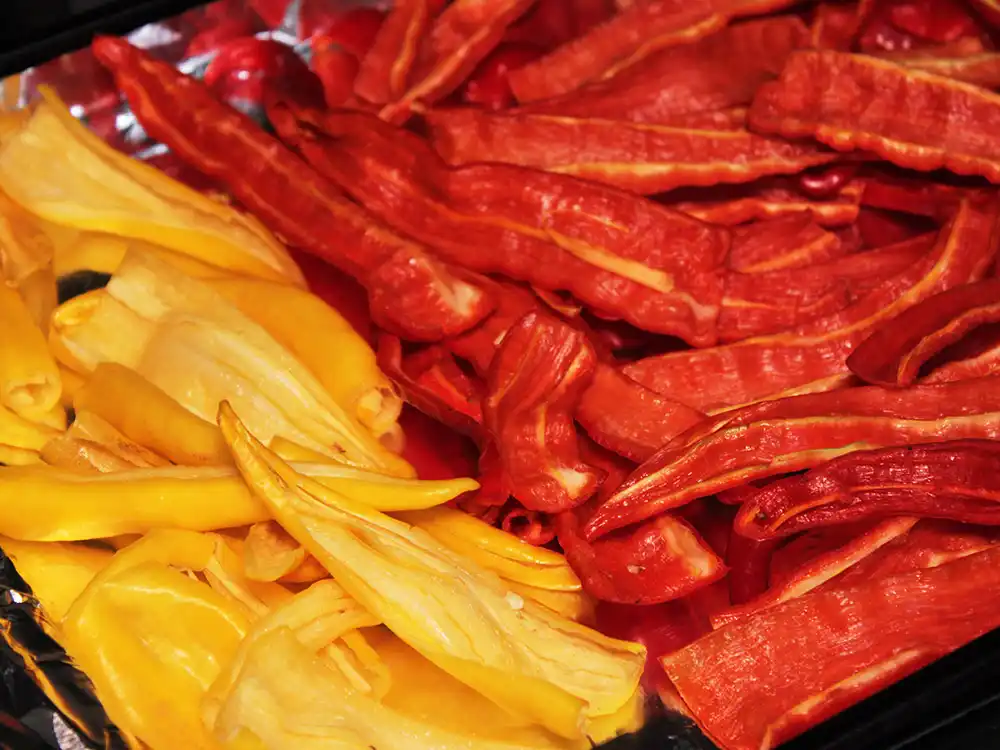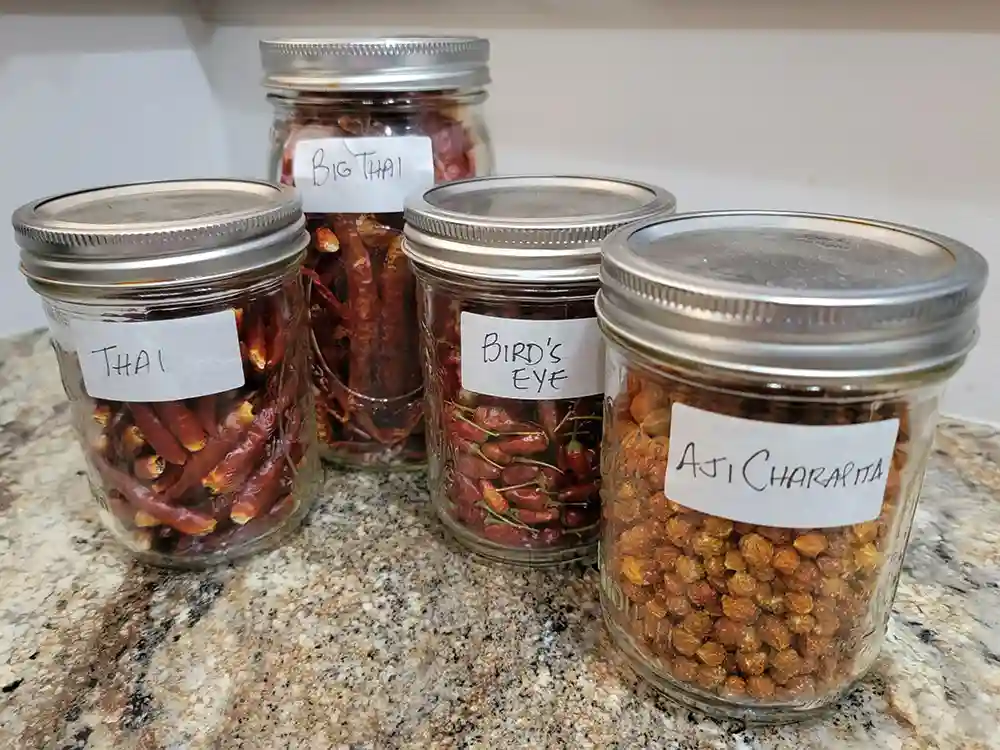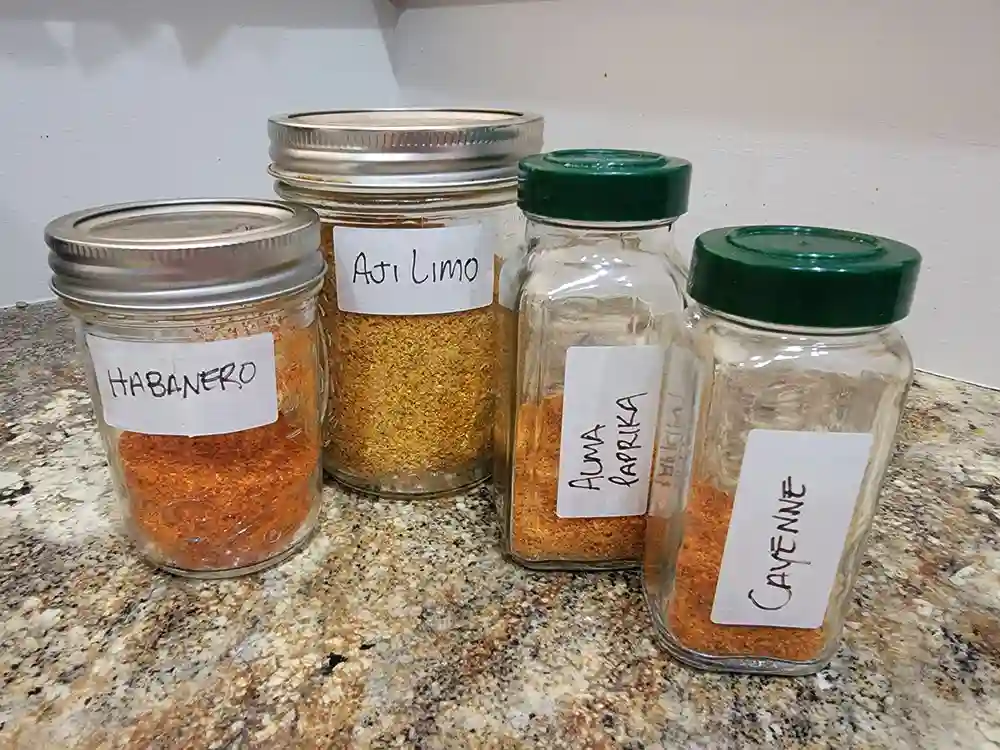Hey there, heat-seekers! Ever wondered how to dehydrate hot peppers at home? Well, you’re in luck. This comprehensive guide is here to show you the ropes. Did you know that dehydrating them can boost their flavor and extend their shelf life? Let’s dive right in and learn all about it.
Understanding Dehydration
Dehydration is a process as old as time. It’s a simple, natural way to preserve food. For hot peppers, it works by removing water content, which helps to concentrate the flavors and prevents bacteria and mold growth.
But why dehydrate hot peppers? Other than flavor intensification, it’s a great way to store surplus harvest, especially for those who grow their own peppers. Plus, dried peppers can add a rich, smoky kick to various dishes – a real treat for your tastebuds!
Types of Hot Peppers Suitable for Dehydration
There’s a world of hot peppers out there. From jalapenos to ghost peppers, each variety has its unique heat level and flavor profile. But not all of them are perfect for dehydration.
For example, thin-walled peppers like cayenne and tabasco dry really well. They retain a good amount of heat and gain an interesting, slightly smoky flavor. On the other hand, thick-walled peppers might not yield the best results due to their high moisture content.
Necessary Equipment for Dehydrating Hot Peppers
Before we jump into how to dehydrate hot peppers, let’s talk about the gear you’ll need. The star of the show is, of course, the dehydrator. These kitchen gadgets are designed specifically to dry foods evenly and efficiently.
But don’t fret if you don’t have one handy. You can still dehydrate hot peppers in your oven or even an air fryer. And if you’re into old-school methods, sun-drying is another viable option, though it takes much longer.
Step-by-step Guide on Dehydrating Hot Peppers
Alright, folks. Let’s roll up our sleeves and get down to the nitty-gritty of this process. I promise it’s easier than you think.
Selection and Preparation of Hot Peppers
First things first, you need to choose the right peppers. Look for ones that are ripe, firm, and free from blemishes. Trust me, the quality of your peppers can make or break your dehydration process. Once you’ve got your peppers, give them a good wash and pat them dry.
It’s worth mentioning here that some folks like to keep their peppers whole to retain a bit more heat. Others prefer to cut them in half or slice them up, which can speed up the drying process. It’s up to you, really.
Just remember, if you’re cutting or slicing your peppers, it’s a good idea to wear gloves. You don’t want any of that spicy capsaicin on your hands – or worse, in your eyes.
Procedure of Dehydrating Hot Peppers With a Dehydrator
Dehydrating hot peppers using a dehydrator is a fairly straightforward process, but there are a few tips and tricks that can help ensure optimal results. Let’s dive into the detailed procedure.
Setting Up Your Dehydrator
First, prepare your dehydrator by cleaning the trays. You want to make sure there’s no residue that could potentially affect the taste or quality of your peppers.
Once your dehydrator is ready, arrange your peppers on the trays. If you’ve chosen to slice your peppers, place them in a single layer, cut side up. This allows the moisture to escape more easily.
If you’re dehydrating whole peppers, you might want to make a small slit in each one to help the moisture escape.
Avoid overcrowding your peppers. Good airflow is crucial for effective dehydration, so leave some space between each pepper.

Dehydrating the Peppers
Set your dehydrator to the recommended temperature. Most dehydrators suggest a range of 125-135°F for vegetables, but always check your manual to be sure.
To retain the most color and flavor in the dried peppers, use as low of a temperature as possible depending on the time you have available.
Now comes the waiting game. Dehydration is a slow, gentle process that can take anywhere from 4-12 hours, depending on the size and moisture content of your peppers.
Checking for Doneness
The key to successful dehydration is patience. You’ll know your peppers are fully dehydrated when they’re brittle and snap easily. If they’re still flexible, they need more time.
It’s better to err on the side of over-dehydrating than under-dehydrating, as any remaining moisture could lead to mold.
Always allow your peppers to cool before checking for doneness, as they can become more brittle as they cool. Once cooled, if they snap cleanly in half, they’re done.
Post-Dehydration Care
Once your peppers are fully dehydrated and cooled, it’s time to store them or proceed to grind them into powder. But we’ll cover storage and grinding in a later section.
Remember to clean your dehydrator after each use to keep it in good condition for your next dehydration project.
Dehydrating Hot Peppers Without a Dehydrator
You can also dehydrate hot peppers in an oven or air fryer. The process is pretty much the same, but you’ll want to set your oven or air fryer to the lowest possible temperature (less than 165°F).
And remember, whether you’re using a dehydrator, oven, or air fryer, always allow your peppers to cool before storing them. This helps to prevent any condensation, which could lead to mold.
Safety Precautions while Handling and Dehydrating Hot Peppers
I can’t stress this enough – always wear gloves when handling hot peppers. Capsaicin, the compound that gives peppers their heat, can irritate your skin and eyes. I learned this the hard way. Let’s just say it was an experience I wouldn’t wish on my worst enemy.
When you’re dehydrating hot peppers, be aware that it can create strong fumes. Some people are more sensitive to this than others. If this is a concern for you, consider doing this process in a well-ventilated area, or even outdoors if possible.
Storing Whole Dehydrated Hot Peppers

Proper storage is critical to maintaining the quality of your dehydrated hot peppers. Once cooled, transfer them to an airtight container and store in a cool, dark place. Glass jars are a popular choice as they also showcase your fiery masterpieces.
Dehydrated hot peppers can last for several months, even years if stored correctly.
Utilizing Dehydrated Hot Peppers
So you’ve learned to dehydrate hot peppers, but what now? Well, the possibilities are endless.
Rehydrating peppers is a breeze – just soak in warm water until they’re soft and pliable. Then, they’re ready to be added to soups, stews, sauces, you name it. Trust me, your chili con carne will never be the same!
But my personal favorite? Grinding them into a fine powder. Homemade chili powder is a game-changer. Sprinkle it on your pizza, pasta, or popcorn for a fiery kick. It’s a delicious way to heat up your cooking. And did you know that you can even make hot sauce from pepper powder?
Grinding Dehydrated Peppers into Powder
Alright, folks. Now that we’ve dried those fiery gems, it’s time to level up our spice game. Let’s turn those dehydrated hot peppers into homemade chili powder. It’s much simpler than you might think, and boy, the flavor is out of this world!
We love making Korean Chili pepper flakes from our dehydrated Gochugaru peppers.
The Grinding Process
First off, make sure your dehydrated peppers are completely cool. This is important because warm peppers could steam up your blender or food processor, leading to a clumpy powder. Not exactly what we’re aiming for here.
Next, pop your peppers into a food processor or blender. If you’re using a blender, you might need to do this in batches, depending on its size. Now, just pulse until you’ve got a fine powder.
And here’s a little tip from my own kitchen adventures: let the dust settle for a minute or two before opening the grinder or blender. Trust me, you don’t want a cloud of chili powder in your face. Learned that one the hard way!
Storing Your Homemade Chili Powder

Storage is just as important as the grinding process itself. You’ve worked hard to dehydrate hot peppers and grind them into this lovely, aromatic powder. Let’s make sure it stays fresh as long as possible.
Firstly, make sure your chili powder is completely cool before storing. Any residual heat could cause condensation in the container, which would be a real party pooper.
Transfer your chili powder to an airtight container, preferably a glass jar. It’s not just practical – there’s something satisfying about seeing your homemade chili powder sitting pretty on your spice rack.
For the longest lasting flavor, store your chili powder in a cool, dark place. The pantry is usually a good spot. Properly stored, your homemade chili powder can easily last years.
Just remember to use a clean, dry spoon each time you dive in. Moisture is the enemy here – it can lead to clumping and reduce the shelf life of your chili powder.
Common Mistakes to Avoid
Alright, let’s talk about a few mistakes you might run into when you dehydrate hot peppers. One common issue is not drying the peppers fully. If they’re still flexible, they need more time. Under-dried peppers can develop mold and spoil the whole batch.
Another tip is to avoid overcrowding your peppers, whether in the dehydrator or the oven. They need plenty of air circulation to dry properly. And always remember to wear gloves when handling hot peppers. I learned this the hard way – a stray hand rub on the eye is no fun at all!
Conclusion
There you have it, folks! Your one-stop guide on how to dehydrate hot peppers. With a bit of time and patience, you can transform those fresh hot peppers into a culinary delight that packs a punch.
Give it a try, and you’ll be amazed by the flavors you can create. I guarantee, once you start, there’s no going back!
FAQ: Dehydrating Hot Peppers
What temperature do you dehydrate hot peppers?
Most dehydrators suggest a range of 125-135°F for dehydrating vegetables, including hot peppers. Always check your specific dehydrator’s manual for its recommended temperature settings.
Should you dehydrate hot peppers outside?
Dehydrating hot peppers outside can help to dissipate the strong fumes produced during the process. If you have a portable dehydrator, or if you’re sun-drying your peppers, outside is a great option.
How do you dehydrate whole hot peppers?
To dehydrate whole hot peppers, simply place them on your dehydrator tray or hang them in the sun. If using a dehydrator, make a small slit in each pepper to help the moisture escape.
Do I need to blanch hot peppers before dehydrating?
No, blanching is not necessary before dehydrating hot peppers. Just wash them, dry them, and they’re ready for the dehydrator or sun-drying.
Is it better to freeze or dehydrate hot peppers?
Whether you freeze or dehydrate hot peppers depends on your intended use. Dehydrating concentrates the heat and flavor, while freezing maintains the fresh pepper’s texture and taste. Both methods are great for preserving peppers.








